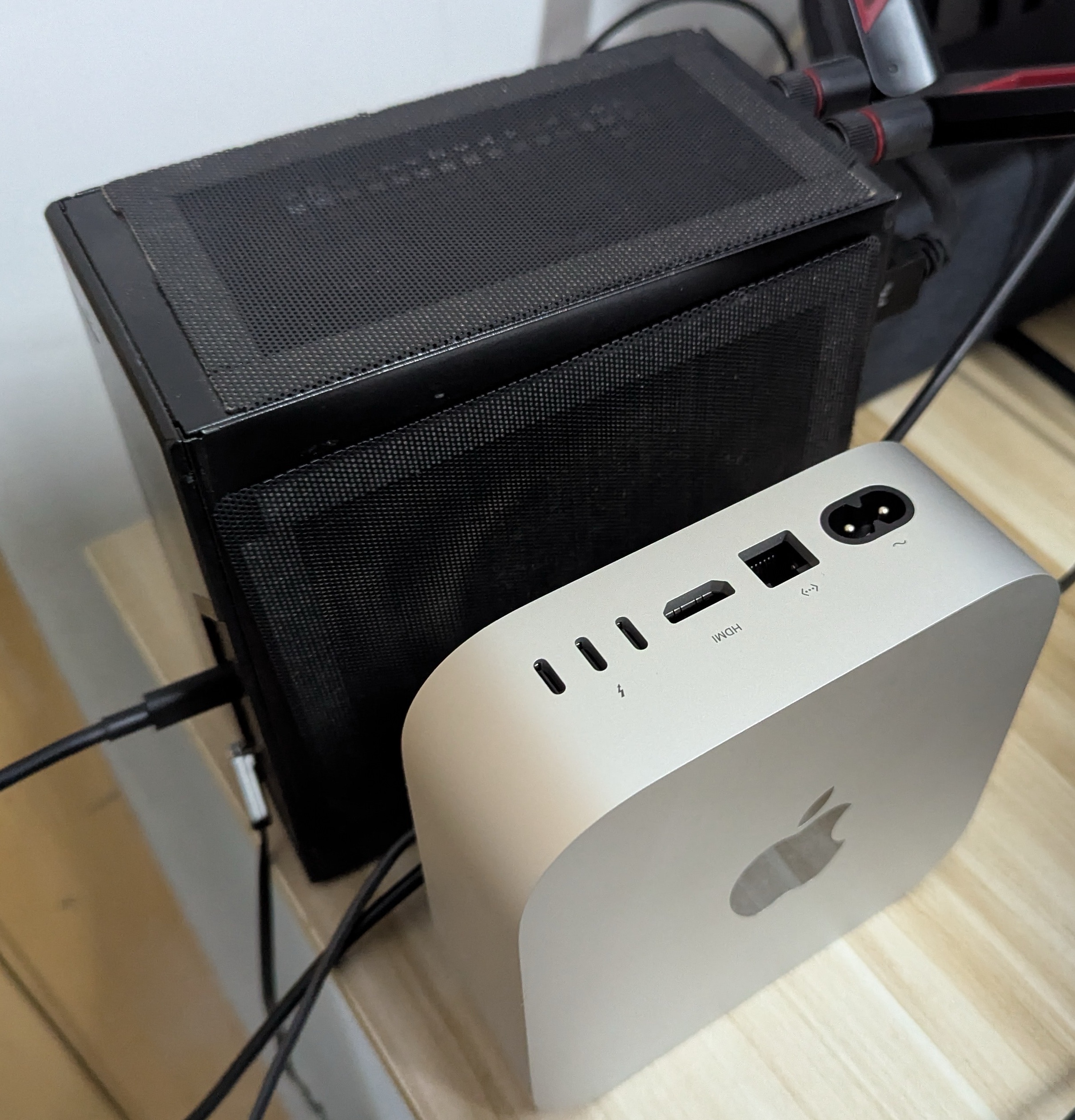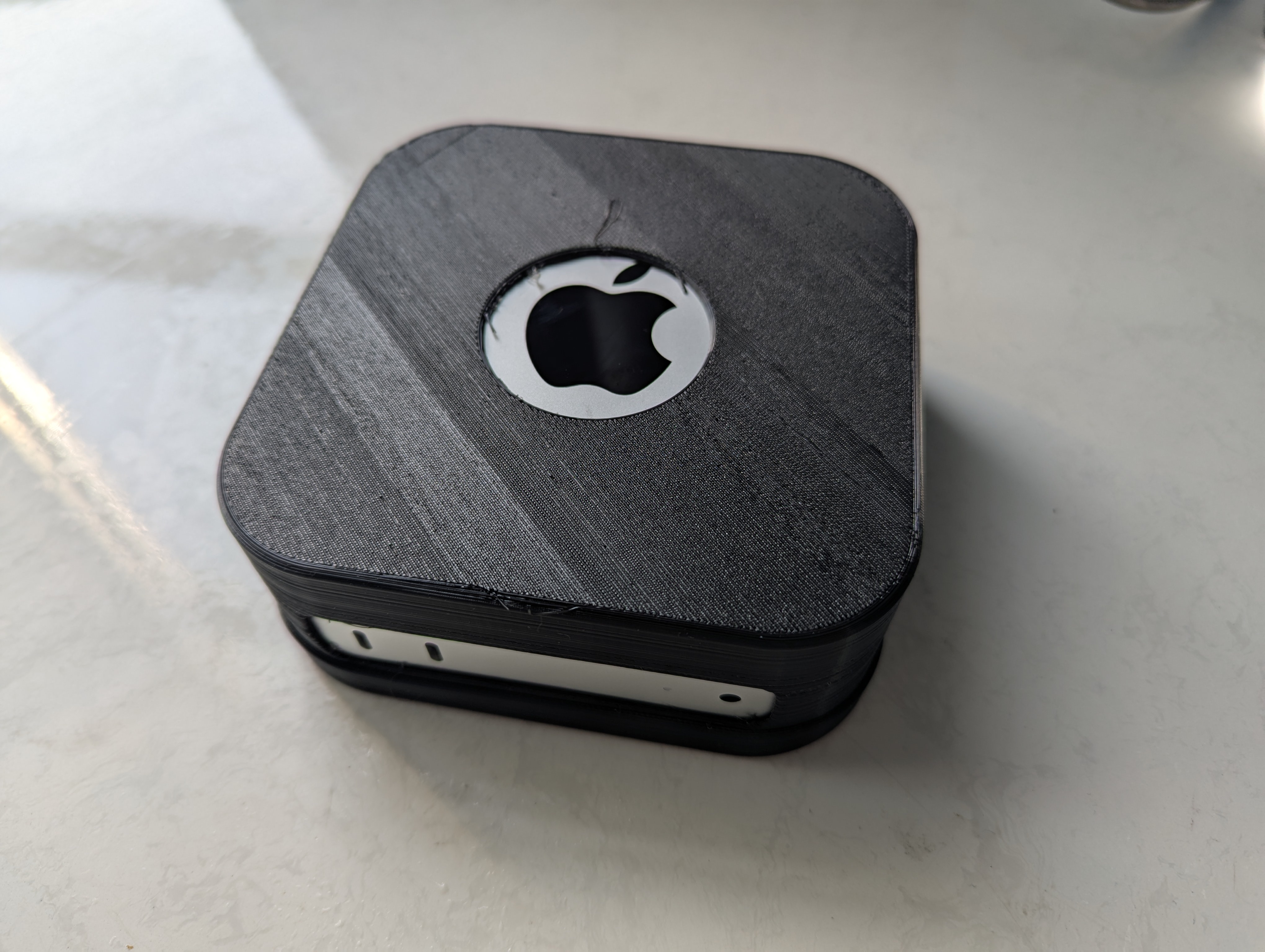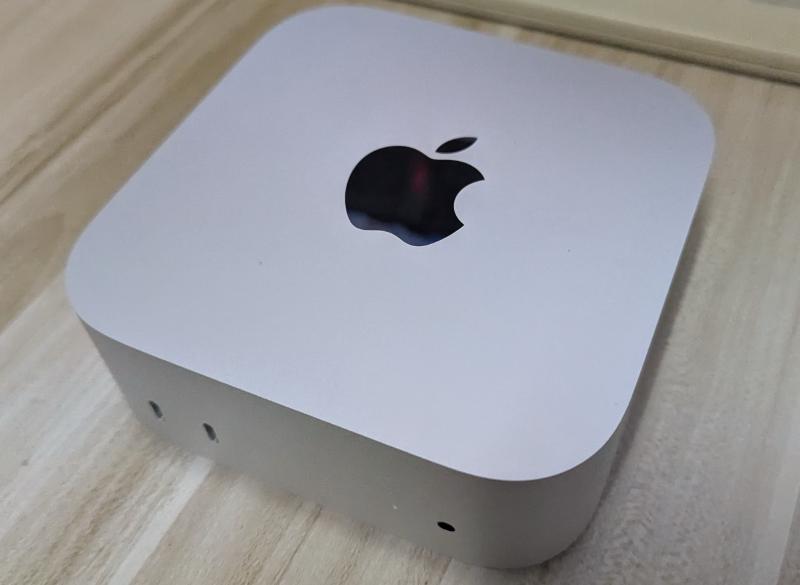The Mac mini 2024 with M4 SoC is a great computer with competitive pricing and memory upgrades. I got the version with 32GB of memory and the 10G Ethernet.
First impression
I’m surprised that the Mac is so small! It’s even smaller than my DeskMini X300, which is already a small and powerful PC.

The Appearance
However, there are a few things about the design of the Mac that bother me.
-
The edges are not rounded or chamfered and appear very sharp. I’m afraid of being cut by the edges as I was once cut by a Logitech keyboard (Logitech G413), and I’m afraid of that happening again. Also, the aluminum surface of the Mac seems so delicate that it can collect fingerprints very quickly. I’ve designed a 3D printed case for my Mac to address these issues. Though it’s making Macs look a little ugly, they serve the purpose of protecting it during transport.

-
The power button is on the bottom of the computer which makes the setting up experience less elegant as you have to reach for the back and maybe lift it a little bit to power it on. I guess this is because the main body of the Mac is designed to be a single piece of aluminum extrusion. Adding a power button to the side of the main body may have added manufacturing costs. An understandable but not very elegant compromise. The fan is on the bottom and seems to lack adequate filtering, it may get clogged by the dust on the desk.
User Experience
Enough talking about the physical design, let’s move on to the user experience.
It’s been a long time since I used a Mac. It was some old public school iMac and Intel-based MacBook Pro, maybe Mountain Lion or Mavericks.
Getting a Mac up and running is super easy. I just logged in to my iCloud account and some out-of-the-box experience types of settings and everything is done. The Mac even comes with some trial subscription to Apple TV and Apple Arcade, although I’m not that interested.
I tested the iPhone mirroring and it works great. A great bonus for using the Apple ecosystem. I tried Apple Intelligence but it seems so basic that I haven’t used it much.
Setting up the Mac as a developer machine is also easy. The beautiful graphics and user interface make me forget that they are based on a UNIX-certified operating system. When using the Terminal, the experience of using Linux can be directly applied here. Getting used to the macOS terminal is even faster for me than getting used to the graphical interface.
The most difficult transition from a Windows machine to a Mac is the keyboard layout. I use the same keyboard for both Windows and Mac. The dedicated Option key causes a lot of frustration. The Control-C and Control-V key bindings on my mouse don’t work on the Mac either. The language key is also missing. It’ll take some getting used to, but then I’ll open the Start menu from time to time. Maybe using a Magic Keyboard for Mac will be better.
AI Workload
I’ve tried Ollama and LM Studio on the Mac for large language models and they work great. With the unified memory architecture, the Mac has more RAM for its GPU than any other discrete graphics card in the same price range. I’ve tested the API function in the LM studio and the Mac is even more responsive than a Windows PC with an RTX3080.
The machine learning support on the Mac is great. Enabling hardware acceleration on Mac is just one line of code just like using CUDA and I haven’t found any specific bugs with MPS. It is a huge advantage of choosing the Mac ecosystem because everyone’s hardware is similar and the software can be designed for that specific set of hardware, which is hard to achieve for any x86 system.
When fully utilizing the GPU for large language model token generation, the total system power consumption barely reaches 40 watts, which is very efficient. The idle power is even more impressive with only a few watts, just like a smartphone.
RAM and Storage
The big disadvantage of the Mac is that the storage and memory options are too expensive to upgrade.
For memory, it’s somewhat acceptable because it’s packaged with the SoC to get a faster access speed. But for storage, Apple uses a separate NAND module without a controller, which is a proprietary design. And they didn’t sell any upgrade parts for it. The official price for adding storage when purchasing is daylight robbery.
There are some third-party storage upgrade options from AliExpress, but I highly doubt their source of NAND flash. Since the same NAND flash is used in iPhones and iPads, there is a chance that they are using a used chip for their module and the data is at risk.
Having an external SSD seems like a good way to go, but it kind of defeats the idea of the Mac mini being so light and portable.
Competition
Some competitors are coming.
There are a lot of x86 NUCs and minicomputers like the ones from Minisforum. However, the GPU on the Mac can totally defeat those competitors, and it also requires no external power bricks, which is a huge plus.
The AMD Strix Halo seems to have a maximum of 128GB of RAM and a much bigger GPU than previous generations. But I doubt that the ROCm will get enough software support to compete, as the SemiAnalysis report shows that even the basic GEMM in pytorch is buggy.
NVIDIA Project DIGITS competes directly with Mac in the local AI inference market. With a custom SoC combining Arm CPU from MediaTek and Blackwell Arch GPU, NVIDIA advertises a lot about its 2000 billion parameter model capability and 1 PetaFLOP FP4 performance. The 2000 dollar price tag is definitely for the higher end of the market, but I thought that for this type of customer, they might want higher quantization like Q8 or even BF16, and the 128GB of RAM is just not enough.
Conclusion
Overall, I’m happy with my purchase.
The Pros are:
- Small foot print
- Low power consumption
- Large VRAM for the price
- Good software support
The Cons are:
- Sharp and delicate case
- Pricing for RAM and storage upgrades
